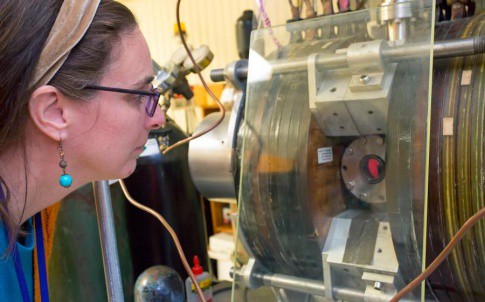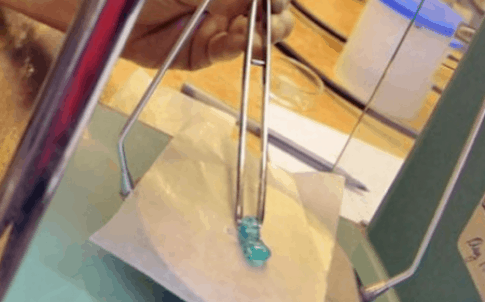The artificial muscle, developed by polymer chemist Lenore Rasmussen from the US Department of Energy’s Princeton Plasma Physics Lab (PPPL), was part of the payload launched this week aboard an International Space Station (ISS) re-supply mission. On arrival at ISS, the synthetic muscle, which adheres to metal electrodes, will be subject to periodic assessments.
It is believed that these synthetic muscles could enable the development of more dexterous robots for space exploration, which will better mimic the natural body movements of humans.

“We can’t explore space without robots,” Rasmussen said in a statement. “The humans can only withstand a certain amount of radiation so that limits the time that people can be in space, whereas robots, particularly if they’re radiation-resistant, can be up there for long periods of time without being replaced.”
Rasmussen patented her synthetic muscle, which expands and contracts like a human muscle and is made of a gel-like material called electro-active polymer, in 1998.
Rasmussen’s challenge has been to get her material to adhere to metal electrodes, which need to be implanted inside the gel in order to control its movements.
The answer was to treat steel and titanium surfaces with a special plasma solution that was super-heated and electrically charged. This altered the surface chemistry of the metal and allowed the gel to bond more closely, continuing to adhere even after repeated muscle simulations.
Tests on Earth have shown that the material can withstand extreme levels of radiation, far exceeding amounts considered lethal to humans. In 2014, researchers exposed the synthetic muscle to 20 times the gamma radiation a human could survive, which they said was about the equivalent of a non-stop return trip from Earth to Mars. According to PPPL, a second test was made lasting 45 hours.
While the material underwent a slight change of colour, researchers said its strength, electro activity and durability did not falter. Further tests revealed that it could hold up against extreme temperatures close to absolute zero.

“The next step is to see how it behaves in a space environment,” said Charles Gentile, an engineer who worked on the technology. “From there the next step might be to use it on a mission to Mars.”
The synthetic muscle was packaged aboard the SpaceX Dragon Capsule, which was launched this week aboard Falcon 9 rocket.
The material will be kept in a zero gravity storage rack in the US National Laboratory on the ISS for 90 days, with astronauts taking photographs of the synthetic muscle every three weeks. When it returns in July 2015, it will be tested and compared with the materials that remained on Earth. The objective is to test its radiation resistance in a space bound environment.




Report highlights significant impact of manufacturing on UK economy
Note to Evil Villain/Dave 2020. Thatcher was PM for _11_ years, from 1979 to 1990 so no one under the age of 34 was even born when she left office....